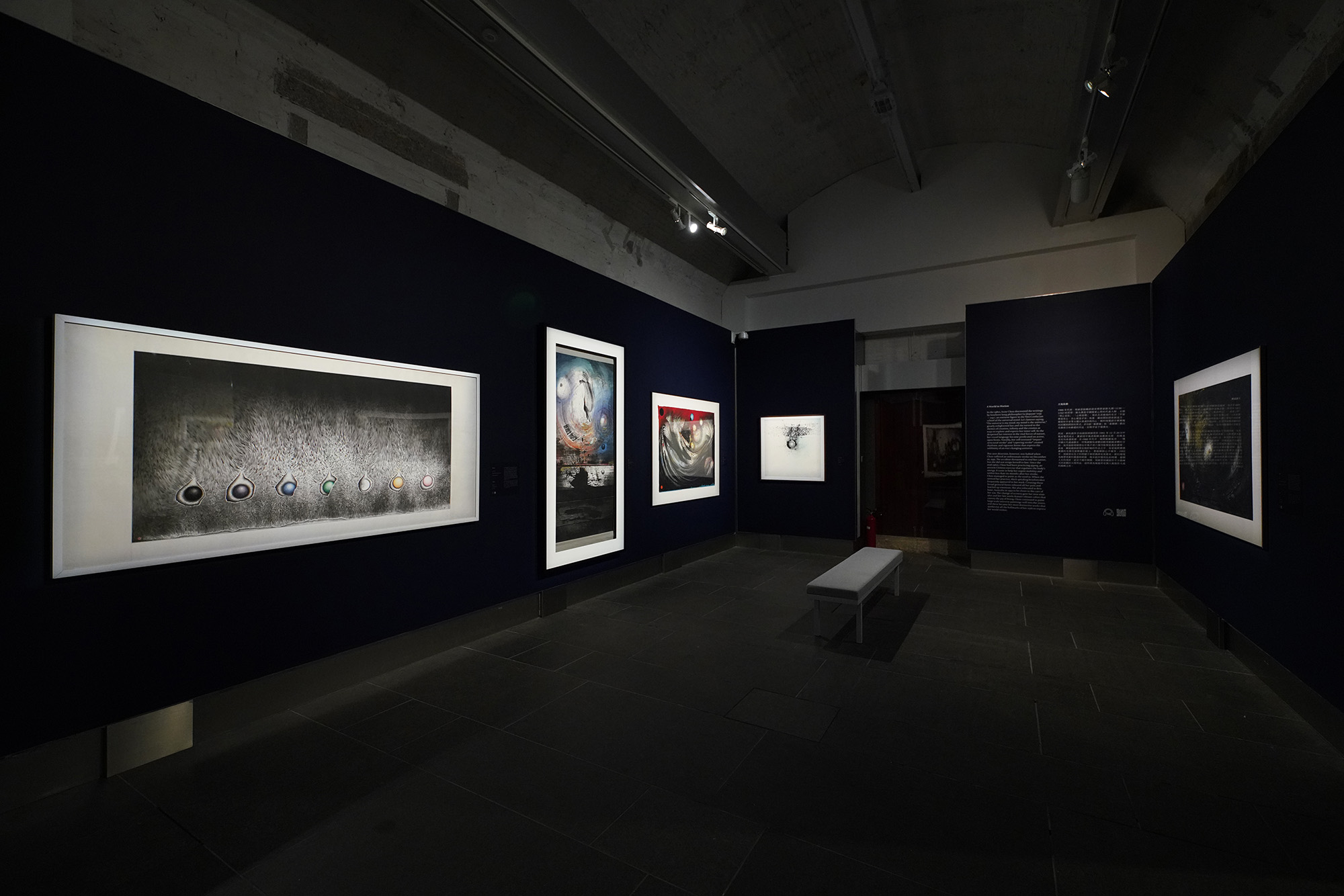Shows
A World Within: The Art and Inspiration of Irene Chou


When walking through Asia Society Hong Kong Center’s exhibition “A World Within: The Art and Inspiration of Irene Chou,” one is reminded of the late Chinese artist’s unequivocal words: “I am my art; my paintings are me.” The show wove four major themes into a poignant story about Chou’s late initiation into the field of art, the development of her unique artistic style, her tumultuous personal life, and her journey of self-discovery.
The retrospective opened with The Universe Lies Within I (1996), a large-scale canvas that demands immediate attention with its striking visuals. Layered with washes of rusty reds, turquoise blues, and flaxen yellows, a vortex of splattered ink and a spiralling calligraphic line dominate the composition. The ambience insinuated by the painting is at once moody, complex, and explosive. The repetitive circular motifs allude to Chou’s belief that spheres were a representation of her “inner self.” The placement of this seminal work as a prelude was a bold curatorial promise to deliver a thoughtful and sensitive approach to her complete oeuvre.

The rest of the exhibition followed a predominantly chronological and thematic arrangement. To the left of The Universe Lies Within I were a group of early works produced by Chou in the 1950s and ’60s, during her artistic training under Lingnan School painter Zhao Shao’ang. This first section, titled “Discovering the Meaning of Art,” encapsulated Chou’s initial ventures beyond imitating the styles of previous ink masters. Untitled (Mantis on Ladies Stocking) (1960) features a section of hosiery lined with earth-toned paper and pasted onto traditional xuan paper. A praying mantis, emblematic of courage in classical Chinese literature, is painted onto the paper ground as if it is standing on the calf of the stocking. Juxtaposing this symbol with the intimate and feminine object, the work seems to gesture at the artist’s own adventurous spirit.
Continuing along this thread of experimentation, the adjacent section, “Her World Within,” had more somber undertones, showcasing paintings produced in the ’60s and ’70s amid a series of personal tragedies. In particular, Chou was deeply impacted by the passing of her friend and mentor Lui Shou-Kwan in 1975. Chou’s homage to the New Ink Movement pioneer, Remembering Mr. Lui (c. 1970s), depicts a neurosphere floating among a black expanse. Portraying a melancholic, yet disquietingly serene scene, the work expresses Chou’s solemn introspection through a muted palette of intertwining tree branches and a small singular red dot in the far-right corner. Unlike the more reserved paintings of her predecessors, Chou pushed the boundaries of conventional ink painting and sought after a unique artistic voice that drew upon raw expression and the power of one’s emotion.
“Duality and Balance” moved onto the works of the ’80s and ’90s. Marking an end to Chou’s despondent self-contemplation, The Universe VI (1997) represents Chou’s celebrated Universe series, which had a distinctive and cohesive style composed of strong, calligraphic brushstrokes, brightly colored dots, and a daring application of watercolors, acrylics, and oils on hemp paper. Chou’s portrayal of a fantastical landscape along the bottom edge with wispy lines leading up to a thick, black, horizontal brushstroke above is testament to the joy the artist feels in freely creating art from her own world.
Finally, “A World in Motion” filled the last room with works from the ’90s and 2000s, when Chou moved to Australia following a severe stroke in 1991. Autumn in Australia (1992), however, showed no signs of the artist’s physical deterioration, with the visceral quality of her ink applications remaining as explosive and rhythmic as ever. Moved by the splendors of Australia’s natural scenery, Chou’s canvases in this section encompass her sensitivity, and while they do not explicitly depict landscape contours, the rich colors and emotionally-charged brushwork express her yearning for a radiant sun, a tranquil moon, and the infinitude of the universe.
Adding to the list of female retrospectives this year, “A World Within: The Art and Inspiration of Irene Chou” was a compelling and thoughtful survey, although it could have benefited from displaying archival photographs of landscapes she was drawn to or artworks of her mentors, which would have helped with contextualizing the sources of her inspiration. Overall, Asia Society Hong Kong delivered a magnificent tribute to an artist who continually sought after her own vision.
“A World Within: The Art and Inspiration of Irene Chou” is on view at Asia Society Hong Kong Center, until January 5, 2020.







